 W
WThe American Trading Company of Borneo was a chartered company formed by Joseph William Torrey, Thomas Bradley Harris together with several Chinese investors shortly after the acquisition over a parcel of land in northern Borneo from the Sultanate of Brunei. The first American settlement in the area soon was named "Ellena", although it was abandoned later due to financial difficulties, diseases and riots among the workers.
 W
WThe Royal Barcelona Trading Company to the Indies also known as the Barcelona Company was a trading company in the 18th century chartered by the Spanish crown, operating from 1755 to 1785, and which had a monopoly on trade to the Caribbean islands of Puerto Rico, Santo Domingo and Margarita. The Company provided a legal framework and a focus for capital which enabled Catalan merchants to break free from the restrictions of the Cadiz monopoly on trade with the Indies, provided skills and contacts that enabled the development of free trade between Catalonia and the Americas to flourish after the Company's demise, and contributed to the development of the textile industry which later became the basis of industrialisation in Catalonia.
 W
WThe Brandenburger Gold Coast, later Prussian Gold Coast, was a part of the Gold Coast. The Brandenburg colony existed from 1682 to 1720, when king Frederick William I of Prussia sold it for 7200 ducats to the Dutch Republic.
 W
WThe Brandenburger Gold Coast, later Prussian Gold Coast, was a part of the Gold Coast. The Brandenburg colony existed from 1682 to 1720, when king Frederick William I of Prussia sold it for 7200 ducats to the Dutch Republic.
 W
WThe Canada Company was a large private chartered British land development company, incorporated by royal charter on August 19, 1826, under an act of British parliament, given royal assent on June 27, 1825, to aid in the colonization of a large part of Upper Canada. Originally formed to acquire and develop Upper Canada's undeveloped clergy reserves and crown reserves which, in 1827, the Company acquired for £341,000 ($693,000) from the Province of Upper Canada.
 W
WThe Casa da Guiné, later known as the Casa da Guiné e Mina and also referred to as the Portuguese Guinea Company, was a state-run Portuguese commercial institution, whose tasked with the management of the Portuguese Empire's economic interests and colonization in West Africa, particularly on the Gulf of Guinea, on the Gold Coast, and on the Slave Coast.
 W
WThe Casa da Índia was a Portuguese state-run commercial organization founded during the Age of Discovery, charged with the regulation of international trade and the administration of the Portuguese Empire's territories, colonies, and factories across India, Africa, and the rest of Asia. Central to the Casa da Índia's objectives was the establishment and protection of a Portuguese mare clausum in the Atlantic Ocean, Indian Ocean, Arabian sea, and the Indies. It was founded by King Manuel I of Portugal in 1500 to direct Portugal's monopoly of the spice trade and to manage royal policy for Portuguese India. Following 1503, it absorbed the Casa da Guiné e Mina, an organization founded by Prince Henry the Navigator in 1443, which operated under a similar mandate for Portuguese Africa, thus making the Casa da Índia responsible for the regulation of all Portuguese imperial trade, the administration of Portuguese trade posts and military bases in Asia and Africa, and protection of the Portuguese Crown's commercial interests.
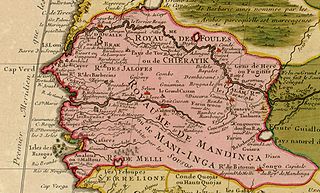 W
WThe Compagnie du Sénégal was a 17th-century French chartered company that administered the territories of Saint-Louis and Gorée island as part of French Senegal.
 W
WThe Royal Guipuzcoan Company of Caracas was a Spanish Basque trading company in the 18th century, operating from 1728 to 1785, which had a monopoly on Venezuelan trade. It was renamed in 1785 the Royal Philippine Company.
 W
WThe Company of Merchant Adventurers of London was a trading company founded in the City of London in the early 15th century. It brought together leading merchants in a regulated company in the nature of a guild. Its members' main business was exporting cloth, especially white (undyed) broadcloth, in exchange for a large range of foreign goods. It traded in northern European ports, competing with the Hanseatic League. It came to focus on Hamburg.
 W
WThe Company of One Hundred Associates, or Company of New France, was a French trading and colonization company chartered in 1627 to capitalize on the North American fur trade and to expand French colonies there. The company was granted a monopoly to manage the fur trade in the colonies of New France, which were at that time centered on the Saint Lawrence River valley and the Gulf of Saint Lawrence. In return, the company was supposed to settle French Catholics in New France. The Company of One Hundred Associates was dissolved by King Louis XIV, who incorporated New France into a province in 1663.
 W
WThe Company of Scotland Trading to Africa and the Indies, also called the Scottish Darien Company, was an overseas trading company created by an act of the Parliament of Scotland in 1695. The Act granted the Company a monopoly of Scottish trade to India, Africa and the Americas, similar to English charter companies' monopolies, and also extraordinary sovereign rights and 21 years of exemptions from taxation.
 W
WThe Danish East India Company refers to two separate Danish-Norwegian chartered companies. The first company operated between 1616 and 1650. The second company existed between 1670 and 1729, however, in 1730 it was re-founded as the Asiatic Company.
 W
WThe Dutch East India Company, officially the United East India Company, was a megacorporation founded by a government-directed consolidation of several rival Dutch trading companies in the early 17th century. It is believed to be the largest company to ever have existed in recorded history. It was established on March 20, 1602, as a chartered company to trade with Mughal India in the early modern period, from which 50% of textiles and 80% of silks were imported, chiefly from its most developed region known as Bengal Subah. In addition, the company traded with Indianised Southeast Asian countries when the Dutch government granted it a 21-year monopoly on the Dutch spice trade.
 W
WThe Dutch West India Company was a chartered company of Dutch merchants as well as foreign investors. Among its founders was Willem Usselincx (1567–1647) and Jessé de Forest (1576–1624). On 3 June 1621, it was granted a charter for a trade monopoly in the Dutch West Indies by the Republic of the Seven United Netherlands and given jurisdiction over Dutch participation in the Atlantic slave trade, Brazil, the Caribbean, and North America.
 W
WThe East India Company (EIC), also known as the Honourable East India Company (HEIC), East India Trading Company (EITC), the English East India Company or the British East India Company, and informally known as John Company, Company Bahadur, or simply The Company, was an English, and later British, joint-stock company founded in 1600. It was formed to trade in the Indian Ocean region, initially with the East Indies, and later with Qing China. The company seized control of large parts of the Indian subcontinent, colonised parts of Southeast Asia and Hong Kong after the First Opium War, and maintained trading posts and colonies in the Persian Gulf Residencies.
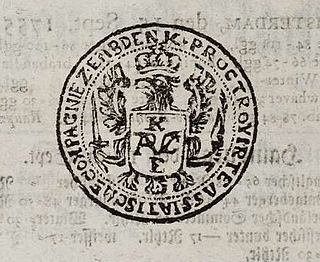 W
WThe Emden Company was a Prussian trading company which was established on 24 May 1751 to trade primarily with the city of Canton in China. Its full name was the Royal Prussian Asiatic Company in Emden to Canton and China, but it was generally known by the shorter name.
 W
WThe German East Africa Company was a chartered colonial organization which brought about the establishment of German East Africa, a territory which eventually comprised the areas of modern Tanzania, Burundi, and Rwanda. The Company originated in 1884 as the Gesellschaft für deutsche Kolonisation with the aim of trading in Africa. The German protectorate of Wituland originated as a separate German sphere of influence in 1885. In April of the same year, the company leased the coastal strip opposite Zanzibar from Sultan Khalifa bin Said for 50 years. Its attempt to take over the administration led to a general revolt along the coast of what is now Tanzania. The company could only hold Dar es Salaam and Bagamoyo with the help of the German navy. In 1889 it had to request the assistance of the German government to put down the rebellion. In 1891, after it became apparent that the company could not handle its dominions, it sold out to the German government, which began to rule German East Africa directly. The company initially continued to operate its many activities, including mines, plantations, railways, banking, minting, etc., before it consented to relinquish them to the German colonial administration and other organizations. It subsequently operated as a land company within the German territory until Britain occupied German East Africa during World War I.
 W
WThe German New Guinea Company was a German Chartered Company which exploited insular territory in and near present Papua New Guinea.
 W
WThe German West African Company, in German Deutsch-Westafrikanische Gesellschaft / Compagnie, was a German chartered company, founded in 1885. It exploited the two German protectorates in German West Africa but did not actually govern them — unlike its counterpart in German East Africa.
 W
WThe Grão Pará and Maranhão Company was a Portuguese chartered company founded in 1755 by the Marquis of Pombal to develop and oversee commercial activity in the state of Grão-Pará and Maranhão, an administrative division of the colony of Brazil. Employees of the company were officially considered to be in the service of the Portuguese Crown and were responsible directly to Lisbon. The company greatly increased the volume of trade in Grão-Pará and Maranhão, though after the Marquis of Pombal fell from power Queen Maria I ordered it to be shut down in 1778.
 W
WThe Hudson's Bay Company is a Canadian retail business group. A fur trading business for much of its existence, HBC now owns and operates retail stores in Canada and the United States. It had been a member of the International Association of Department Stores from 2001 to 2005.
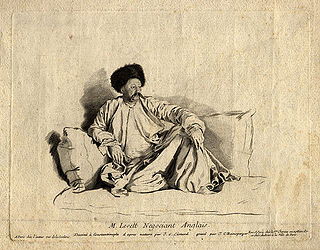 W
WThe Levant Company was an English chartered company formed in 1592. Elizabeth I of England approved its initial charter on 11 September 1592 when the Venice Company (1583) and the Turkey Company (1581) merged, because their charters had expired, as she was anxious to maintain trade and political alliances with the Ottoman Empire. Its initial charter was good for seven years and was granted to Edward Osborne, Richard Staper, Thomas Smith and William Garret with the purpose of regulating English trade with the Ottoman Empire and the Levant. The company remained in continuous existence until being superseded in 1825. A member of the company was known as a Turkey Merchant.
 W
WThe London and Bristol Company came about in the early 17th century when English merchants had begun to express an interest in the Newfoundland fishery. Financed by a syndicate of investors John Guy, himself a Bristol merchant, visited Newfoundland in 1608 to locate a favourable site for a colony. Upon his return to England 40 people applied for incorporation as the Tresurer and the Companye of Adventurers and planter of the Cittye of london and Bristoll for the Collonye or plantacon in Newfoundland. The company was known as the London and Bristol Company or simply the Newfoundland Company.
 W
WThe Massachusetts Bay Colony (1630–1691), more formally The Colony of Massachusetts Bay, was an English settlement on the east coast of America around the Massachusetts Bay, the northernmost of the several colonies later reorganized as the Province of Massachusetts Bay. The lands of the settlement were in southern New England, with initial settlements on two natural harbors and surrounding land about 15.4 miles (24.8 km) apart—the areas around Salem and Boston, north of the previously established Plymouth Colony. The territory nominally administered by the Massachusetts Bay Colony covered much of central New England, including portions of Massachusetts, Maine, New Hampshire, and Connecticut.
 W
WMegacorporation, mega-corporation, or megacorp, a term originally coined by Alfred Eichner but popularized by William Gibson, derives from the combination of the prefix mega- with the word corporation. It has become widespread in cyberpunk literature. It is synonymous with syndicate, globalist- or transnational capital. It refers to a corporation that is a massive conglomerate, holding monopolistic or near-monopolistic control over multiple markets. Megacorps are so powerful that they are above the government laws, possess their own heavily armed private armies, be the operator of a privatized police force, hold "sovereign" territory, and even act as outright governments. They often exercise a large degree of control over their employees, taking the idea of "corporate culture" to an extreme. Such organizations as a staple of science fiction long predate cyberpunk, appearing in the works of writers such as Philip K. Dick, Thea von Harbou, Robert A. Heinlein, Robert Asprin, and Andre Norton. The explicit use of the term in the Traveller science fiction roleplaying game from 1977 predates Gibson's use of it.
 W
WThe Mississippi Company was a corporation holding a business monopoly in French colonies in North America and the West Indies. In 1717, the Mississippi Company received a royal grant with exclusive trading rights for 25 years. The rise and fall of the company is connected with the activities of the Scottish financier and economist John Law who was then the Controller General of Finances of France. When the speculation in French financial circles, and the land development in the region became frenzied and detached from economic reality, the Mississippi bubble became one of the earliest examples of an economic bubble.
 W
WThe Mozambique Company was a royal company operating in Portuguese Mozambique that had the concession of the lands in the Portuguese colony corresponding to the present provinces of Manica and Sofala in central Mozambique.
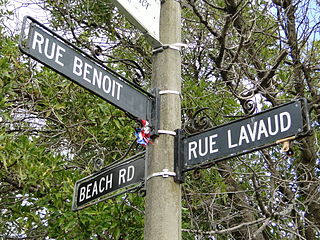 W
WThe Nanto-Bordelaise Company — formally La Compagnie de Bordeaux et de Nantes pour la Colonisation de l’Île du Sud de la Nouvelle Zélande et ses Dépendances — was a French company inaugurated in 1839 by a group of merchants from the cities of Nantes and Bordeaux, with the purpose of founding a French colony in the South Island of New Zealand.
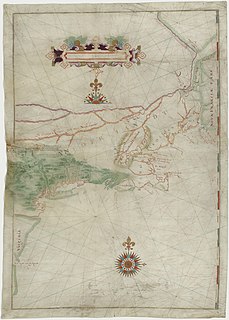 W
WNew Netherland Company was a chartered company of Dutch merchants.
 W
WThe New Zealand Company, chartered in the United Kingdom, was a company that existed in the first half of the 19th century on a business model focused on the systematic colonisation of New Zealand. The company was formed to carry out the principles devised by Edward Gibbon Wakefield, who envisaged the creation of a new-model English society in the southern hemisphere. Under Wakefield's model, the colony would attract capitalists who would then have a ready supply of labour—migrant labourers who could not initially afford to be property owners, but who would have the expectation of one-day buying land with their savings.
 W
WThe Niassa Company or Nyassa Chartered Company was a royal company in the Portuguese colony of Mozambique, then known as Portuguese East Africa, that had the concession of the lands that include the present provinces of Cabo Delgado and Niassa between 1891 and 1929.
 W
WThe Noordsche Compagnie was a Dutch cartel in the whaling trade, founded by several cities in the Netherlands in 1614 and operating until 1642. Soon after its founding, it became entangled in territorial conflicts with England, Denmark, France, and other groups within the Netherlands.
 W
WThe North Borneo Chartered Company (NBCC), also known as the British North Borneo Company (BNBC) was a British chartered company formed on 1 November 1881 to administer and exploit the resources of North Borneo. The territory became a protectorate of the British Empire in 1888 but the company remained involved with the territory until 1946, when administration was fully assumed by the Crown colony government.
 W
WThe Ostend Company, officially the General Company Established in the Austrian Netherlands for Commerce and Navigation in the Indies was a chartered trading company in the Austrian Netherlands in the Holy Roman Empire which was established in 1722 to trade with the East and West Indies. It took its name from the Flemish port city of Ostend.
 W
WThe Portuguese East India Company was a short-lived ill-fated attempt by Philip III of Portugal to create a national chartered company to ensure the security of Portuguese interests in India in the face of increasing influence by the Dutch and English following the personal union of the Portuguese and Spanish Crowns.
 W
WThe Providence Company or Providence Island Company was an English chartered company founded in 1629 by a group of Puritans including Robert Rich, 2nd Earl of Warwick in order to establish the Providence Island colony on Providence Island and Mosquito Coast of what became Nicaragua.
 W
WThe Royal African Company (RAC) was an English mercantile (trading) company set up in 1660 by the royal Stuart family and City of London merchants to trade along the west coast of Africa. It was led by the Duke of York, who was the brother of Charles II and later took the throne as James II. It shipped more African slaves to the Americas than any other company in the history of the Atlantic slave trade.
 W
WThe Royal Company of the Philippines was a chartered company founded in 1785, directed to establish a monopoly on the Spanish Philippines and all surrounding trade. It weakened in importance until it was dissolved in the 1830s. Its direct predecessor was that of the Guipuzcoan Company of Caracas.
 W
WThe Royal Greenland Trading Department was a Danish state enterprise charged with administering the realm's settlements and trade in Greenland. The company managed the government of Greenland from 1774 to 1908 through its Board of Managers in Copenhagen and a series of Royal Inspectors and Governors in Godthaab and Godhavn on Greenland. The company was headquartered at Grønlandske Handels Plads at Christianshavn.
 W
WThe Royal Niger Company was a mercantile company chartered by the British government in the nineteenth century. It was formed in 1879 as the United African Company and renamed to National African Company in 1881 and to Royal Niger Company in 1886. In 1929 the company became part of the United Africa Company, which came under the control of Unilever in the 1930s and continued to exist as a subsidiary of Unilever until 1987, when it was absorbed into the parent company.
 W
WThe Russian-American Company Under the High Patronage of His Imperial Majesty was a state-sponsored chartered company formed largely on the basis of the United American Company. Emperor Paul I of Russia chartered the company in the Ukase of 1799. It had the mission of establishing new settlements in Russian America, conducting trade with natives, and carrying out an expanded colonization program.
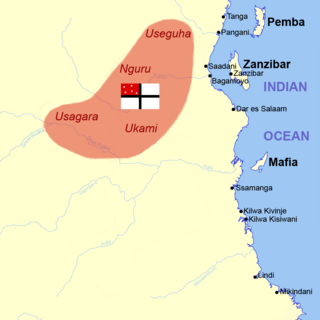 W
WThe Society for German Colonization was founded on 28 March 1884 in Berlin by Carl Peters. Its goal was to accumulate capital for the acquisition of German colonial territories in overseas countries.
 W
WThe Society of Merchant Venturers is a charitable organisation in the English city of Bristol.
 W
WThe Society of Suriname was a Dutch private company, modelled on the ideas of Jean-Baptiste Colbert and set up on 21 May 1683 to profit from the management and defense of the Dutch Republic's colony of Suriname. It had three participants, with equal shares in the costs and benefits of the society; the city of Amsterdam, the family Van Aerssen van Sommelsdijck, and the Dutch West India Company. Only through mutual consent could these shareholders withdraw from the society.
 W
WThe Gesellschaft Süd-Kamerun was a private trading corporation formed in 1898, facilitated by governor Jesko von Puttkamer, to run the rubber and ivory trade in the southeast of the German colony of Kamerun.
 W
WThe South Sea Company was a British joint-stock company founded in January 1711, created as a public-private partnership to consolidate and reduce the cost of the national debt. To generate income, in 1713 the company was granted a monopoly to supply African slaves to the islands in the "South Seas" and South America. When the company was created, Britain was involved in the War of the Spanish Succession and Spain and Portugal controlled most of South America. There was thus no realistic prospect that trade would take place, and as it turned out, the Company never realised any significant profit from its monopoly. However, Company stock rose greatly in value as it expanded its operations dealing in government debt, and peaked in 1720 before suddenly collapsing to little above its original flotation price. The notorious economic bubble thus created, which ruined thousands of investors, became known as the South Sea Bubble.
 W
WThe Spanish Company was an English chartered company or corporate body established in 1530, and 1577, confirmed in 1604, and re-established in 1605 as President, Assistants and Fellowship of Merchants of England trading into Spain and Portugal, whose purpose was the facilitation and control of English trade between England and Spain through the establishment of a corporate monopoly of approved merchants.
 W
WThe Swedish Africa Company was a Swedish trading company, founded in 1649 on the initiative of the Walloon-Dutch merchant Louis De Geer and his son Laurens, for whom Sweden had become a second home. The primary interest of the company was the trade on the Swedish Gold Coast. The establishment of the pseudo Swedish Africa Company caused much astonishment in the Amsterdam city council.
 W
WThe Swedish South Company, also known as the Company of New-Sweden, was a trading company from Sweden founded in 1626, that supported the trade between Sweden and its colony New Sweden, in North America. The colony was envisioned by its founding father Willem Usselincx; it was to become the first Swedish transoceanic trading project.
 W
WThe Swedish West India Company was a Swedish chartered company which was based in the West Indies. It was the main operator in the Swedish slave trade during its existence.
 W
WThe Van Diemen's Land Company is a farming corporation in the Australian state of Tasmania. It was founded in 1825 and received a royal charter the same year, and was granted 250,000 acres. (1,000 km2) in northwest Van Diemen's Land in 1826. The company was a group of London merchants who planned a wool growing venture to supply the needs of the British textile industry.
 W
WThe Virginia Company was an English trading company chartered by King James I on 10 April 1606, with the object of colonizing the eastern coast of America. The coast was named Virginia, after Elizabeth I, and it stretched from present-day Maine to the Carolinas. The company's shareholders were Londoners, and it was distinguished from the Plymouth Company, which was chartered at the same time and composed largely of gentlemen from Plymouth, England.
 W
WThe Zambezia Company, or the Companhia da Zambézia in Portuguese, was the third leasing company of the Portuguese colony of Mozambique, established on 25 May 1892. Its concession regions covered the areas of Chire, bordering Nyasaland, Zumbo, and Luenha.